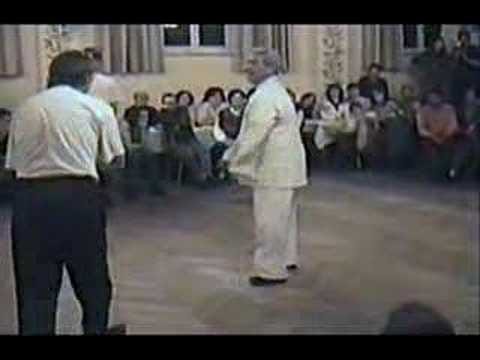Push Hands (“Tui Shou” in Mandarin) is a group of practices that comprises the primary partner work of Tai Chi.
These practices range from formal drills within strictly defined patterns to completely freestyle explorations of flowing connection with your partner. The formal drills help to ingrain important principles, shapes, and ways of responding to input from your partner. Freestyle practice then allows you to test your abilities in a less formulaic engagement.
Both formal and informal practices can be approached either from a standpoint of harmonious cooperation or playful competition.
In the former, you and your partner are working together to establish and contain a beautiful, connected, flowing pattern. In the latter, you are revealing for your partner the weaknesses in their structure, the gaps in their patterns, and otherwise helping them discover where there is work to be done by putting them off balance and, once “fajin” ability is developed, bouncing them off of you or making them jump away.
Regardless of the approach, push hands interactions are characterized by lightness of touch and continuous, flowing movements.
| Revealing the Unseen |
There will be aspects of your Tai Chi that are not obvious in individual practices, but present themselves for examination during interactions with a partner.
Some of these will be simple blockages in your physical structure. A part of the body that lacks the flexibility to move through a certain path required by the pattern, for instance.
Other times, push hands will reveal a tendency to collapse, meaning that one part of the body moves too much when trying to follow or receive your partner’s movement, causing the alignment of your shape to become compromised.
And perhaps most importantly, push hands will reveal how your body responds to potentially disruptive input. Do you fight back or freeze (“ding”)? Do you flee from the pressure (“diu”)? Ultimately, push hands serves as a means of gradually purging these responses from the body, replacing them with the grand principle of “stick-adhere-join-follow”, which represents the harmonizing third option.
(See =Tai Chi Principles: A Novice Primer= for an explanation of these terms.)
| Friendly Competition |
It is good fun to try off-balancing or bouncing your partner, when doing so has been established in the parameters of the practice session. And it is a necessary exploration in order to develop the qualities and abilities on the Yang side of the art.
For some, this will be challenging to engage with simply because they are not competitive by nature, dislike confrontation, or have experienced difficult timeline events associated with physical violence. For others, the competitive aspect is overly intoxicating, and they will struggle to avoid trying too hard to “win”. For both types, push hands has the potential to serve as a balancing practice.
Push hands is not sparring in the strict sense of the term. We do not use striking, tripping, throwing, or joint locking in this practice. It is meant to assist you in developing the qualities of body and Being associated with Tai Chi practice. It is not meant to directly translate into combat ability (without the addition of truly martial practices into your training).
Therefore, when approached sensibly, push hands should be a safe practice for most practitioners.
The higher purpose of push hands is not to off-balance or discharge your partner, though it is true that these effects will arise and become available for you to manifest as you progress in the art, and it is fun to explore using these abilities. But if overcoming your partner becomes your primary goal in practice, that ingredient will spoil the soup.
(This is evidenced by the interactions featured in so-called push hands competitions, which largely devolve into wrestling and do not correspond to how we approach push hands in Black Feather.)
| Example Videos |
This first video is one my teacher, Sifu Yau-Sun Tong, often shows to introduce new students to the concept of push hands. It gives a fairly agreeable overview, and features footage of Ma Jiangbao, son of the famous Wu Style Grandmaster Ma Yueh Liang.
This next one features some of the basic formal practices that novice students learn in the Black Feather Tai Chi class, as demonstrated by Master Chen Zhenglei.
Here, Masters Chen Xiaowang and Chen Xiaoxing of the Chen Village tradition demonstrate their school’s version of the “Four Hands” pattern, an intermediate formal pattern.
And finally, something to intrigue you and arouse both your wonder and suspicions. For it is difficult to discern between the astounding effects that real masters can manifest and the pretending of charlatans, at least until you have enough experience to be able to *feel* the interaction you are watching in your own body.
Here is the aforementioned late Grandmaster Ma Yueh Liang of the Wu Style, at an advanced age, demonstrating what it looks like when there is a large disparity in ability between the two people involved in a push hands interaction.
He is, indeed, the real deal. What you call a “High Hand” in the art.
And one more for you, where he demonstrates some more formal interactions.



